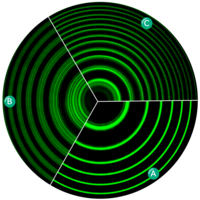Zeeman effect

The Zeeman effect is a splitting of lines in a spectroscopy graph when a magnetic field is applied. It's named after the Dutch physicist Pieter Zeeman, who discovered it in 1896. It's similar to the way light bends when passing through a prism. When we apply a magnetic field to something like an atom, the particles inside the atom that the magnetic field touches is pushed either up or down. Similarly to a prism, this causes the light to separate into more than one line, each with a slightly different color.
Related topics others have asked about:
